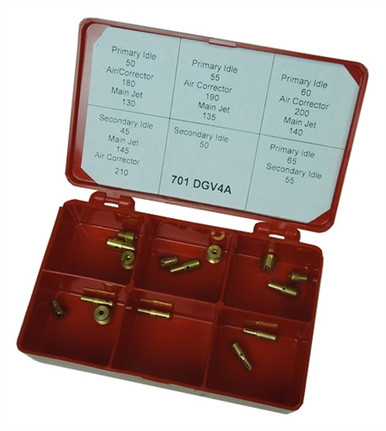Here is a jet kit for Weber 32/36 carbs, specifically for tuning for high altitude and/or fuel economy:
They also sell individual jets in any size you might need, for $5.95 each:
And here is guidance for how to go about it:
Note that by tuning for economy or higher altitude, you get both!
Personally I might not buy the kit, just note the leanest primary barrel setting they have (130 main, 150 air correction, 50 idle) and go leaner from there. But it would be nice to have the range of jets to play with, to lean out the secondary too.
They also sell individual jets in any size you might need, for $5.95 each:
And here is guidance for how to go about it:
Note that by tuning for economy or higher altitude, you get both!
Personally I might not buy the kit, just note the leanest primary barrel setting they have (130 main, 150 air correction, 50 idle) and go leaner from there. But it would be nice to have the range of jets to play with, to lean out the secondary too.



Comment